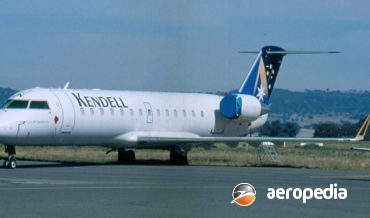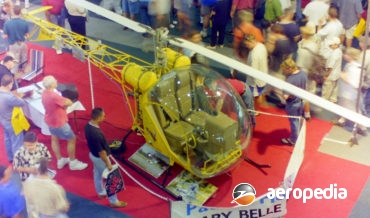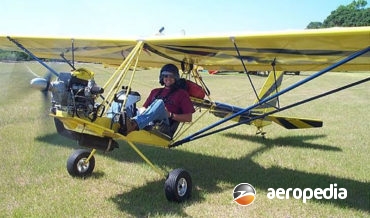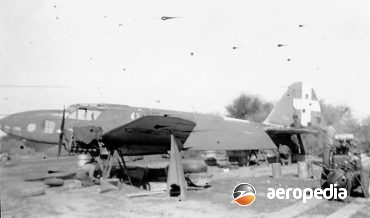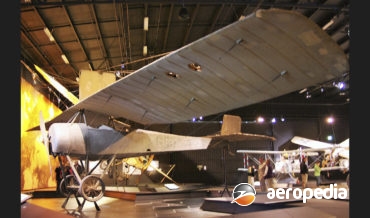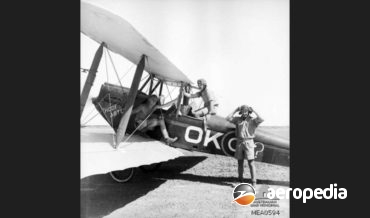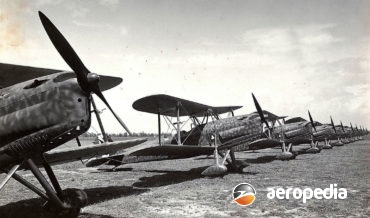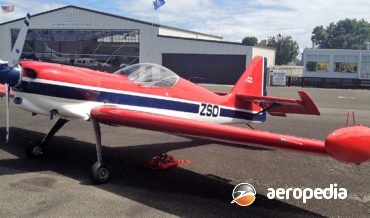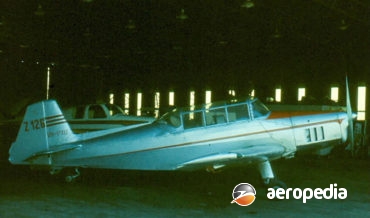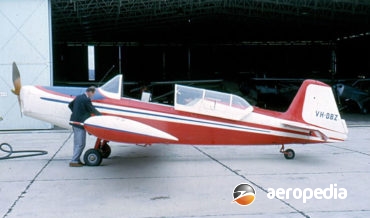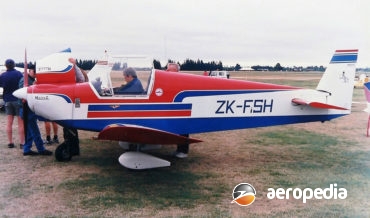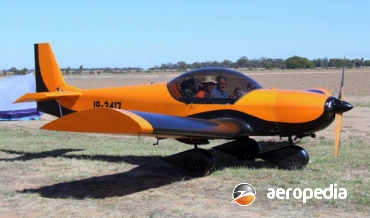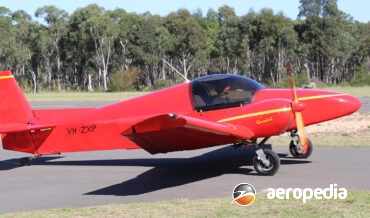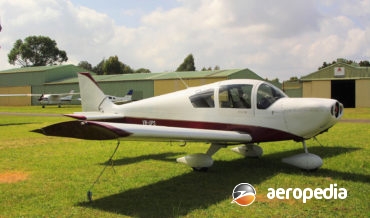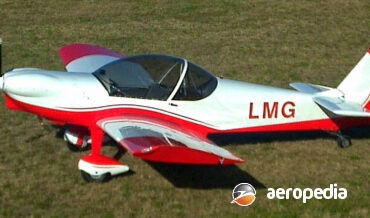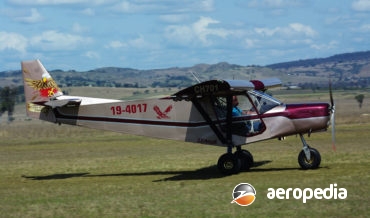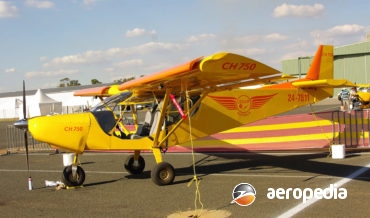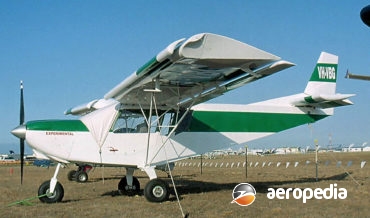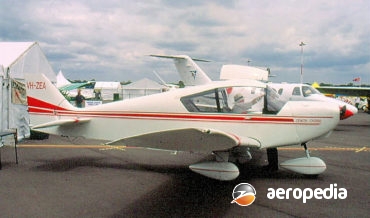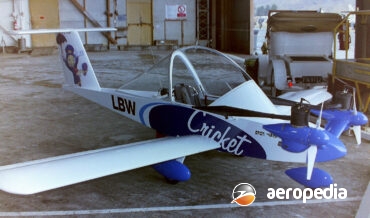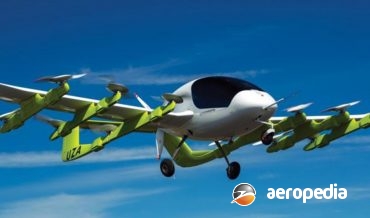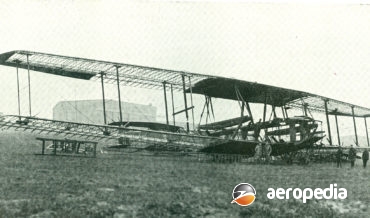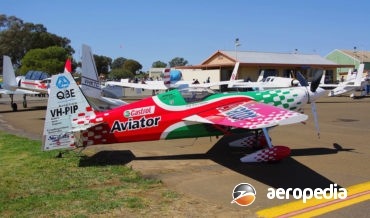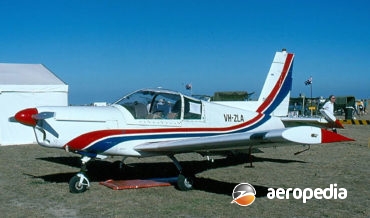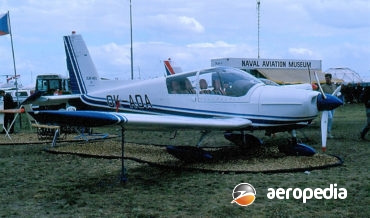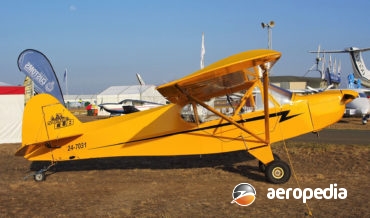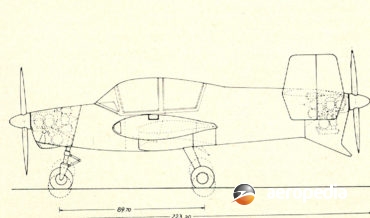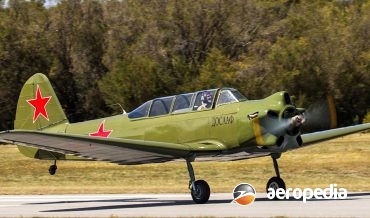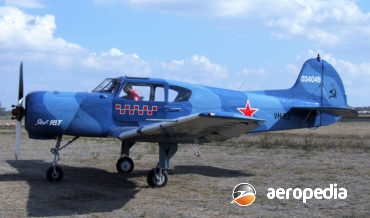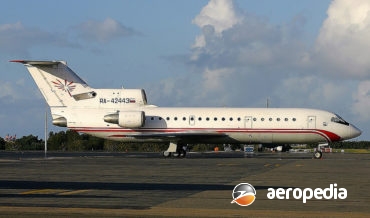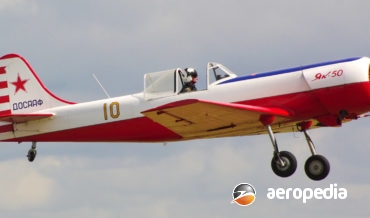David C. Eyre
Produced by the Regional Aircraft Division of Bombardier Inc of Canada, the Regional jet is a development of the Challenger to meet the requirements of regional airlines.
David C. Eyre
- May 17, 2019
The Baby Belle first flew in 1990 and has been developed as a scaled down replica of the well known Bell 47 series of helicopters, being of rugged construction and able to fly all-year round.
David C. Eyre
- May 17, 2019
This series of helicopters was founded in the 1950s and was known as the Helicom, this evolving into the Commuter, and later the Commuter II. Manufacturing rights were then sold to one of the original partners and became Canadian Home Rotors Inc and it was sold for many years
David C. Eyre
- May 17, 2019
This was one of a number of light training aircraft and was described as a fully-aerobatic two-seat conventional tractor biplane built by the Canterbury (NZ) Aviation Company at Sockburn near Christchurch and in many ways was similar in appearance to the Sopwith Tabloid. It made its first flight
David C. Eyre
- May 17, 2019
The Javelin was introduced to the ultralight market in 1999 and was intended to appeal to pilots interested in having an open cockpit.
David C. Eyre
- May 17, 2019
The Ghibli was a general purpose light reconnaissance bomber of low-wing configuration with a fixed spatted tailwheel undercarriage, a single fin and rudder, and built for the Italian Air force in the mid 1930s.
David C. Eyre
- May 17, 2019
Gianni Caproni (1886 – 1957) designed and built his first aeroplane, known as the Ca.1, in 1910 and went on to have a long and distinguished career in aviation, his achievements including designing bombers for the Italian Air Force, his design the Ca.3 being built also in the United States,
David C. Eyre
- May 17, 2019
The Ca 100 was produced in Milan, Italy from 1929 and was a licence-built variant of the DH-60 Moth.
David C. Eyre
- May 17, 2019
The Ca.164 was designed and developed as a training and touring biplane and was produced in Italy for the Italian Air Force and Italian aero clubs shortly prior to World War II.
David C. Eyre
- May 17, 2019
Initially designed in the United States by Carlson Aircraft Inc of East Palestine, Ohio, the Sparrow was modified to meet Rule 101.55 by Lake Macquarie Aviation, the type initially to be built for the Australian market at Warners Bay, NSW, and later plans were announced to construct both it and
David C. Eyre
- May 17, 2019
The Zlin Z-50 series of high-performance aerobatic monoplanes was introduced to the Moravan Narodni Podnik of Otrokovice range of light Zlin aircraft in 1976 and was successful for some years in unlimited aerobatic competition.
David C. Eyre
- May 8, 2019
Over the years Zlin in Czechoslovakia produced a number of training aircraft capable of aerobatics and these have been popular around the world.
David C. Eyre
- May 8, 2019
The Trener / Trener Master series of light aircraft was designed to meet a specification calling for a standard basic training aircraft that would meet the needs of both military and civil flying schools.
David C. Eyre
- May 8, 2019
The design of the basic Trener series was influenced by the Bucker Bu-181 Bestmann which was built under licence by the Moravan facility at Otrokovice after World War II.
David C. Eyre
- May 8, 2019
The CH-100 series of light single-engine aircraft was designed by German born, Canadian domiciled, designer Christopher Heintz and was designed for amateur construction, being basically a smaller variant of the CH-200 two-seater.
David C. Eyre
- May 8, 2019
The CH-200 is one of a series of light aircraft designed by Christopher Heintz, who for a period worked for Avions Pierre Robin in France, it being a two-seat all-metal aircraft designed to meet the requirements of the amateur construction market, the prototype being designed in France and making its
David C. Eyre
- May 8, 2019
One of many designs by Christopher Heintz in the 1970s, the CH-300 was a developed of the CH-200 series aimed at producing a low-wing monoplane with an ability to carry a third person, or two children, on a bench seat behind the two main seats.
David C. Eyre
- May 8, 2019
The Zenith Aircraft Co was formed in 1992 in Mexico, Missouri to design, develop and build small light kit aircraft for the amateur constructor and set up a production facility at the Mexico Memorial Airport.
David C. Eyre
- May 8, 2019
The Gemini was designed in Canada by Christopher Heintz of Zenair Ltd as a twin-engine light sporting aircraft with twin-engine performance and reliability to be made available to interested parties in kit form that was affordable and easy to build.
David C. Eyre
- May 8, 2019
The Zenair CH-640 was designed by Christopher Heintz and placed in production by his company, Zenair, in Canada in kit form. It was developed from the two-seat Zenair CH-2000 and had increased span of the wings and stabilator and was redesigned to take engines in the 112-kw to 179-kw (150-hp
David C. Eyre
- May 8, 2019
The Zenair CH-650, also known as the Zodiac CH-650, is a second generation light sport aircraft designed to meet US LSA regulations developed specifically for sport pilots and was made available to the market in 2013 and at that time was the latest aircraft from the Zodiac line of aircraft
David C. Eyre
- May 8, 2019
One of a series of designs developed by Zenair Ltd in Canada, the CH701, which was first flown in 1986, can be obtained in kit form and more than 500 have been completed around the world. Normally fitted a tricycle undercarriage, the CH701 can also be fitted with floats,
David C. Eyre
- May 8, 2019
One of a line of aircraft developed in Canada for the ultra-light / homebuilt market, the CH-750 was introduced to the Zenair range of aircraft in 2010 following the introduction of the sport aircraft category.
David C. Eyre
- May 8, 2019
Introduced into the Zenith range of light aircraft in 1998, the CH-801 was designed to expand the utility of the STOL CH-701 series by increasing the useful load to over 454 kg (1,000 lb) whilst retaining the original designs short and rough field capability.
David C. Eyre
- May 8, 2019
The CH2000, also known as the Alarus CH-2000 in its certified form, is a light, low-wing, tricycle undercarriage two-seat side-by-side aircraft of all-metal construction marketed by the Zenith Aircraft Co in Canada.
David C. Eyre
- May 8, 2019
TheCri Cri was designed and developed by Michael Colomban in France, the prototype, known as the MC-10, being flown for the first time on 19 July 1973 powered by two 136-cc Rowena 6507J single-cylinder two-stroke engines, and was claimed to be the “smallest twin-engine aeroplane flying” and “the only aircraft
David C. Eyre
- May 8, 2019
In October 2017 a new aircraft was registered in New Zealand as the Zephyr Airworks Mule SPA and it became ZK-UZA (c/n 002 – ex N302ZX) and was registered to Zephyr Airworks ULC of Wellington.
David C. Eyre
- May 8, 2019
Following the outbreak of World War I Graf Zeppelin and Robert Bosch, assisted by Gustav Klein, Helmut Hirth and Professor Baumann commenced the construction of a series of large bomber aircraft, a facility for the construction of the aircraft being at Gothaero Waggonfabrik at the Gotha airfield being erected.
David C. Eyre
- May 8, 2019
The Edge 540 was designed by Zivko Aeronautics of Guthrie, Oklahoma as an advanced, unlimited class, aerobatic aircraft, to meet or exceed the performance of other aircraft available in its class.
David C. Eyre
- May 8, 2019
The Z-142 is an all-metal two-seat training aircraft with full aerobatic capability manufactured by Moravan Inc at Otrokovice in the Czech Republic, being developed from the Z-42.
David C. Eyre
- May 8, 2019
Moravan Aeroplanes in Prague has been building aircraft under the Zlin name since 1943, the company having its beginnings as a subsidiary of the Bata Shoe Company.
David C. Eyre
- May 8, 2019
Zlin began building gliders and small aircraft in 1934 but during World War II built Klemm 35B and Bucker Bestmann military trainers for the Luftwaffe.
David C. Eyre
- May 8, 2019
Morava Zlin Aero Service was set up late in 2000 to market an ultra-light aircraft known as the Savage. The prototype was first flown in 1997 and initial development took place in Italy, parts being manufactured in the Czech Republic, type approval being obtained in late 2003.
David C. Eyre
- May 8, 2019
The Shock Cub is a development of the Savage Cub produced by Zlin Aviation in the Czech Republic, the new design receiving the name “Shock Cub” as it was expected to shock the aficionados of the Cub type of aircraft.
David C. Eyre
- May 8, 2019
The Libellula was designed by Mr Yager of Lewisham, NSW, being a light twin-engine touring aircraft for amateur construction with plans to be made available to builders.
David C. Eyre
- May 8, 2019
Towards the end of World War II the basic Soviet Air Force trainer, known as the UT-2M, received some development and improvements, including enclosed cockpits and changes to the undercarriage.
David C. Eyre
- May 8, 2019
The prototype of the Yak 18 series was flown for the first time in 1945 and, after entering production in 1947, saw extensive service with the Soviet Airforce, and the airforces of Austria, China, Czechoslovakia, North Korea, Poland, East Germany, Egypt and Hungary.
David C. Eyre
- May 8, 2019
The Yak-42 is a three-engine airliner which was developed to replace the Tu-134 and An-24 in passenger service in the Soviet Union.
David C. Eyre
- May 8, 2019
In 1937 Alexander Sergeivich Yakovlev designed the Ya-10, an open cockpit two-seat training aircraft with a 90-kw (120-hp) Renault engine.
David C. Eyre
- May 8, 2019
The Yak-50 was designed by Sergei Yakovlev and Y Yankevitch as an improved aerobatic aircraft to succeed the Yak-18 series at the 1976 World Aerobatic Championships which were held that year in the city of Kiev in the Ukraine.
David C. Eyre
- May 8, 2019
Recent Comments
Archives
Categories
- No categories
Categories
- No categories
Latest Posts
Newsletter

